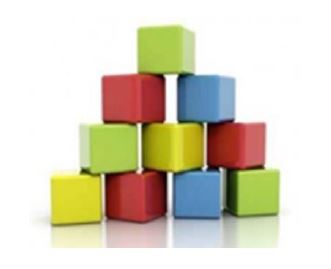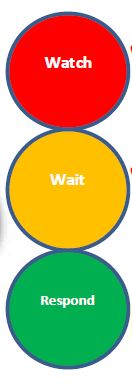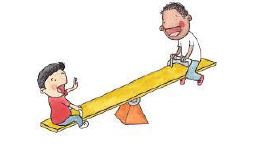

In this session we will begin to think about the way your child communicates with you and the type of message they are trying to send. Remember, your child doesn’t have to use words to communicate, there are lots of other ways to send messages to you.
It is important for you to watch and notice all the ways your child is sending a message because it let you know they have taken their turn and that it’s time for you to respond. When you get tuned in this way your response will follow your child’s lead and your child is then much more likely to notice what you said or did. Your tuned in response really helps to get the interaction going.
Use the session handouts and videos below to help you look at al the different ways your child is sending their message to you and what the message is.
Introduction: Watch and notice how and why your child communicates


Watch and Notice
Wait expectantly
Respond
In this session we focus on: Watch and notice how your child communicates
|
What is your child interested in? How is he trying to interact with you? What is he trying to say? |

Watch and notice
Watch and notice HOW your child communicates.
Communication is all about sending and receiving messages with another person,
back and forth, like a see-saw!
Sometimes children will send us messages in different ways – they might not use words yet. They might use their hands (e.g. pointing), face (e.g. looking), body (e.g. wriggling with excitement) or using noises (such as ‘eh’)!
It’s our job to look out for these different ways, (other than words), that children send us messages and then do or say something right away. When your response follows your child’s lead this will help your child get better at taking their turn on the see-saw!
At home this week, look for how your child sends you a message without words? Let us know what you saw and how you responded by following their lead.
1.
2.

Watch and notice WHY your child communicates.
Children communicate for lots of different reasons!
Why does your child communicate?
What is your child trying to tell you?
|
|
|
|
|
|
|
|
|
|
|
|
Look for reasons why your child sends you a message with or without words?
| What did your child do to send a message? | Why did they do it? What was the reason for them wanting to communicate? | How did you respond? What did you do? |
|
|
||
|
|
||
|
|
Watch and notice so you can respond by following your child’s lead. When you follow your child’s lead you are really tuning in to what message they want to send to you.
Session B Video: Sure Start Building Blocks for Communication – 1 (pagetiger.com)
Video Script
Watch and notice how and why your child communicates
Welcome back! Now we are going to think about the ways in which your child sends messages to you and the meaning they are trying to send.
Sometimes children will send us messages in different ways – they might not use words yet. They might use their hands (e.g. pointing), face (e.g. looking), body (e.g. wriggling with excitement) or using noises (such as ‘eh’)!
It is our job to look out for these different ways, (other than words), that children send us messages and then do or say something right away. When your response follows your child’s lead this will help, your child get better at taking their turn – a bit like on a see saw.
Communication is a bit like that seesaw where it tips up and down as you and your child each take a turn. When we notice that a child has taken their turn, then we can take our turn and really get the communication seesaw moving.
Let’s have a look at Jacob with his mum and see if we can notice the different ways in which he is sending his message to her.
Did you notice how Jacob looked at his mum when he wanted her to blow another raspberry. But he also did something else that you might not have thought of as communication – he jiggled his legs.
So we noticed how Jacob was communicating – by looking at mum and jiggling his legs. Now let’s think of the reason why he was communicating. He wanted to send a message to his mum to get her to blow another raspberry…. And because mum is really tuned in to him, she knew exactly what he meant and she responded – she followed his lead and took her turn in the game again.
So, when you are with your little one, start to look at all the different ways they are sending a message to you – do they look at you, do they look at what they want, do they make a body or hand movement. Do they stand a cry. Perhaps they push or pull you towards what they want, or maybe they go and stand beside what they want. All of these are ways of communicating. Are you able to figure out what message they are sending to you? They might be saying ‘No!’ or ‘I need something’ or ‘look what I did’. Sometimes we have to guess a bit but it’s really important that we try to work it out so that our response can follow their lead and get that communication see saw going. So I hope you have fun together as you wait and notice how your child is sending messages to you. Bye for now.
